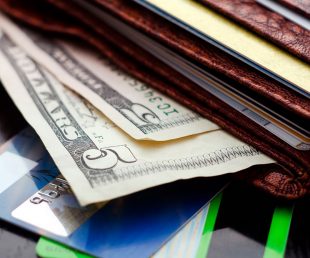Over the past couple of years, the question of whether to buy a used versus new car has become far more complicated.
Due to a 42% growth in used car prices since 2020, it’s no longer a guarantee to find a good deal in the market. Even luxury car dealers, like Bentley and Rolls-Royce, have experienced a used car sales surge.
Yet, buying new doesn’t offer a price break either. Supply chain shortages have led to all-time high listing prices.
Whether you’re buying your first car or on your third or fourth, planning your next car purchase will likely require evaluating more variables than it did in the past. Considering depreciation of the vehicle and the level of supply in the market will help you determine what works for your financial goals.
Why are more people buying used cars?
People shifted to used cars at greater rates during the pandemic. Prior to COVID-19, car brands had already started releasing fewer new vehicle models. This resulted in less supply available in new cars, increasing prices. Because of these rising prices, people turned towards used.
But then the pandemic hit. With the uncertainty surrounding the economy at the time, it led to a greater desire to find deals. Meanwhile, as many people sought used cars, the supply began to dwindle. Car rental companies are one of the biggest suppliers of used vehicles. They rent out vehicles for a couple of years, then sell the stock and buy new to keep the auto fleet fresh. When the pandemic hit, though, they stopped buying new cars and stopped selling their fleet in great numbers. This led to a further constraint on the supply of used vehicles.
Because of this supply-demand dynamic, some used vehicles began to have higher prices than new ones. It has resulted in a strange development within the used-car industry: the seller often has the power in negotiations.
Understanding the economics of your car purchase and leaning on your financial advisor’s help will ensure that you’re buying a vehicle that matches your financial goals, whether you want to buy used or new.
Are there more options with new or used cars?
In many ways, you have more options when buying a new vehicle. You can select the model (if it’s still offered by the brand), the color, the features, and any other add-ons that you would like included. This gives you control over the vehicle that you’ll eventually drive.
But, due to supply chain delays, it also may take time to step foot inside the automobile. Average wait times are between two weeks and four months, but many car buyers are waiting well beyond that. This may not matter, though. In a survey of car buyers, those making more than $150,000 said that they would be willing to wait longer than 12 months for their new vehicle to come in.
In the used car space, you may not have to wait as long—but you will have to shop around more. You also may not find every feature you want. You may need to compromise on the color or model; you’ll have to weigh the price available, the options on the lot, or what the dealers expect they can find on the market.
Why are car depreciation costs important to consider?
One of the big reasons that people buy used vehicles, beyond the total price, has to do with depreciation. When you buy a new vehicle, the car immediately depreciates in value as you drive it off the lot. On average, a new car will lose about 11% of its value as soon as you leave the dealer while it will drop a total of 15% to 25% over the first year. Within five years, it will fall by around 40%.
How well you maintain the vehicle and the overall demand for the car when you go to sell will further impact the resale value. Even under current conditions, used car depreciation works differently. Instead, the initial depreciation that the car experiences has already occurred. Its resale value will depend more on the demand for used cars when you’re ready to sell.
But due to the surge in prices, people selling used cars have, at times, reportedly sold some models for more than they bought them. Will that last? If the demand drops or supply rises, it will impact the resale value, which would result in a larger loss over the course of ownership.
Don’t forget other costs as well. Often, it’s advisable, whether buying used or new, to put 20% down on the cost of the vehicle. This ensures that the rate at which you pay back the loan will occur faster than depreciation, ensuring you never owe more than the car is worth. Often, you will get better interest rates on loans for new vehicles, while insurance will cost more.
Is having the latest in safety and luxury important to you?
Personal preferences may also play a role in whether you choose a new or used vehicle. There are two factors to keep in mind when making your decision.
When buying new, you will know that the vehicle is up to date with the latest safety standards. In a used vehicle, depending on the age of the car, it could lack some of the safety features most important to you. Make sure to understand what key safety features you want—and what might be missing if you go with an older model.
The other bonus included in a new vehicle is all the technological bells and whistles. Since technology advances daily, a used car will not have all of the technological capabilities that you can find in a new vehicle. If you highly value having the latest technology, looking towards a new vehicle may suit you best.
Despite the growth of prices, whether to buy new or used really comes down to what you want from a vehicle. Your answer can guide you—along with the help of your financial advisor—to the best solution.
This article is for promotional purposes only. Santander Bank, N.A. (“Santander”) does not provide investment, business, financial, accounting, tax, or legal advice, and the content of this article does not constitute investment, business, financial, accounting, tax, or legal advice. Santander does not make any claims, promises, or guarantees about the accuracy, completeness, currency, or adequacy of any content. Santander expressly disclaims all express and implied warranties of accuracy, completeness, currency, or adequacy of the information and content in this article. Readers should consult their own attorneys or tax or other advisors regarding the applicability of any referenced information or financial or other strategies to their own unique circumstances. This article does not necessarily reflect the views or endorsement of Santander.
Santander Bank, N.A. is a Member FDIC and a wholly owned subsidiary of Banco Santander, S.A. ©2022 Santander Bank, N.A. All rights reserved. Santander, Santander Bank, and the Flame Logo are trademarks of Banco Santander, S.A. or its subsidiaries in the United States or other countries. All other trademarks are the property of their respective owners.
![]()


